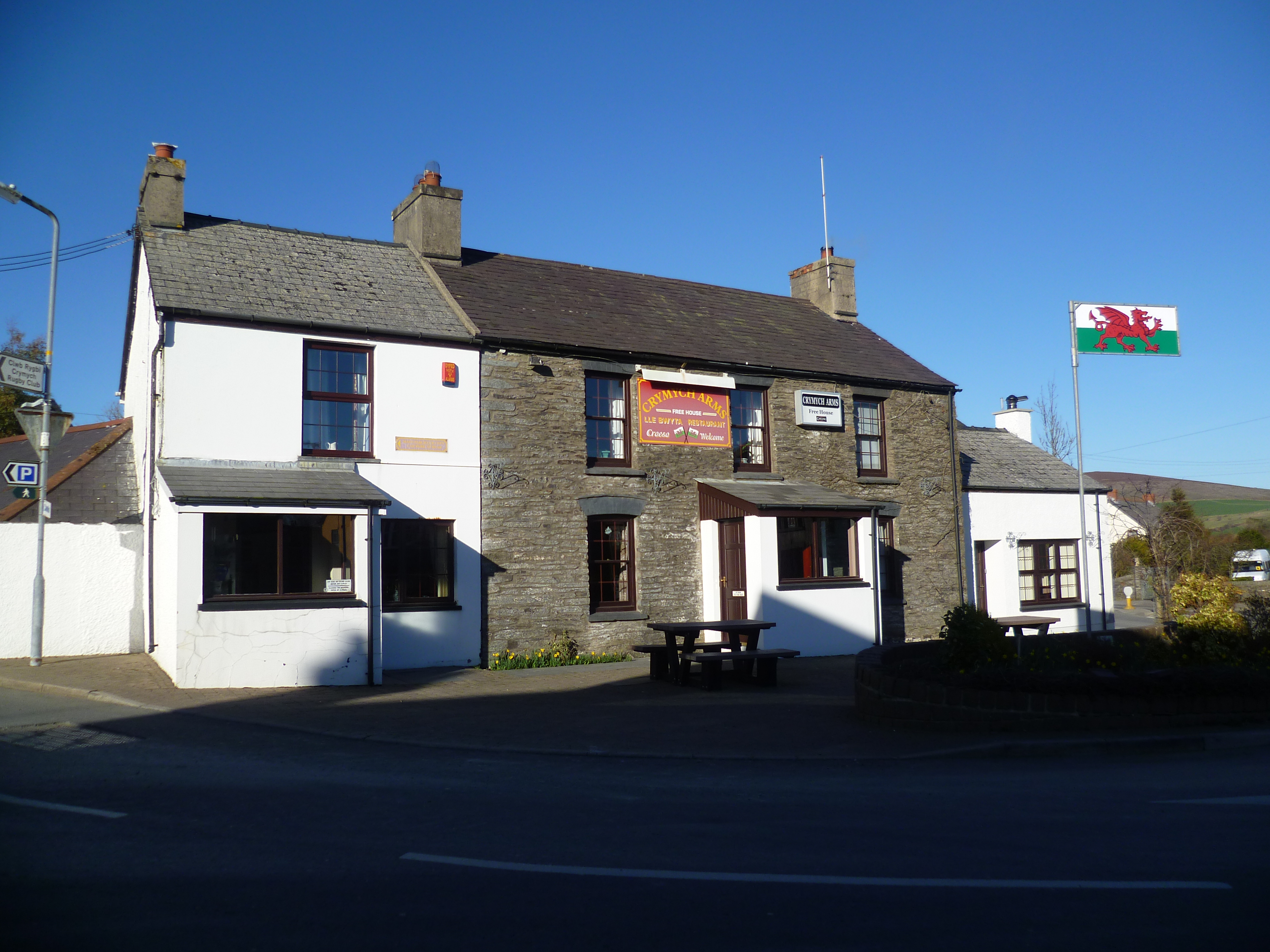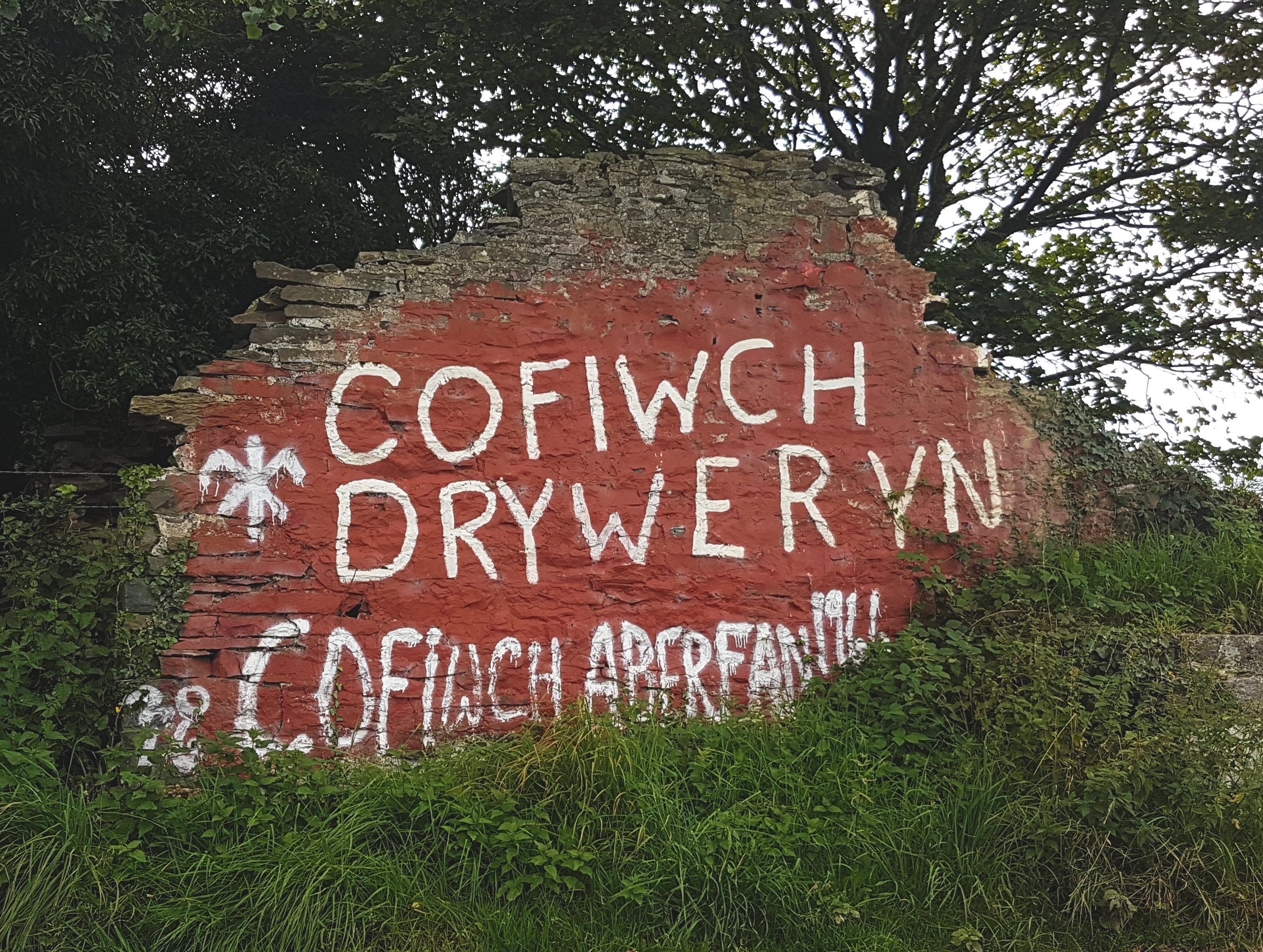|
Bwlchygroes
Bwlchygroes (; sometimes spelled Bwlch-y-groes) is a small upland rural village in the community and parish of Clydau, north Pembrokeshire, Wales, SW of Newcastle Emlyn and the same distance east of Crymych. Community Bwlchygroes Community Hall occupies part of the former village school, which closed in 2000. Clydau School, in Tegryn, now serves pupils from Bwlchygroes. School records for 100 years to 1967 are held at the Pembrokeshre Record Office. The village post office closed in 2008. Bwlch-y-Groes Women's Institute papers 1964-2009 are held by Pembrokeshire Record Office. Chapel There is a Calvinist Methodist chapel in the village, dating from 1777; date stones bear several later dates. Amenities There is an agricultural merchant in the village as well as holiday accommodation. The old school is the headquarters of the Green Dragon community bus and scooter scheme, funded by the Welsh Government, and is home to the nursery group (''ysgol feithrin''). Notability Danie ... [...More Info...] [...Related Items...] OR: [Wikipedia] [Google] [Baidu] |
Clydau
Clydau (sometimes Clydaï or Clydey) is a community and parish in Pembrokeshire, Wales. Name The meaning of the Welsh placename is uncertain, although the church is now dedicated to St. Clydaï, an alleged daughter of Brychan. History During the early Middle Ages, the settlement was the site of Llangeneu ('St Ceneus'), which was accounted one of the seven principal sees of Dyfed despite having no endowment of land. Cledau (as ''Cledye'') appears on a 1578 parish map of Pembrokeshire. Josiah Thomas Jones (1799-1873), republican and Welsh nationalist, was born at CwmHir Farm, Clydau. He went on to publish many books and established several newspapers in English and Welsh, including the Aberdare Times. Settlement The settlement consists of a small group of properties around the parish church, southwest of Newcastle Emlyn and southeast of Cardigan. Community Although the settlement of Clydau is tiny, the community is large, encompassing several other settlements and/or parishes ... [...More Info...] [...Related Items...] OR: [Wikipedia] [Google] [Baidu] |
Pembrokeshire
Pembrokeshire ( ; cy, Sir Benfro ) is a Local government in Wales#Principal areas, county in the South West Wales, south-west of Wales. It is bordered by Carmarthenshire to the east, Ceredigion to the northeast, and the rest by sea. The county is home to Pembrokeshire Coast National Park. The Park occupies more than a third of the area of the county and includes the Preseli Hills in the north as well as the Pembrokeshire Coast Path. Historically, mining and fishing were important activities, while industry nowadays is focused on agriculture (86 per cent of land use), oil and gas, and tourism; Pembrokeshire's beaches have won many awards. The county has a diverse geography with a wide range of geological features, habitats and wildlife. Its prehistory and modern history have been extensively studied, from tribal occupation, through Roman times, to Welsh, Irish, Norman, English, Scandinavian and Flemish influences. Pembrokeshire County Council's headquarters are in the county ... [...More Info...] [...Related Items...] OR: [Wikipedia] [Google] [Baidu] |
Community (Wales)
A community ( cy, cymuned) is a division of land in Wales that forms the lowest tier of local government in Wales. Welsh communities are analogous to civil parishes in England. There are 878 communities in Wales. History Until 1974 Wales was divided into civil parishes. These were abolished by section 20 (6) of the Local Government Act 1972, and replaced by communities by section 27 of the same Act. The principal areas of Wales are divided entirely into communities. Unlike in England, where unparished areas exist, no part of Wales is outside a community, even in urban areas. Most, but not all, communities are administered by community councils, which are equivalent to English parish councils in terms of their powers and the way they operate. Welsh community councils may call themselves town councils unilaterally and may have city status granted by the Crown. In Wales, all town councils are community councils. There are now three communities with city status: Bangor, St Asaph ... [...More Info...] [...Related Items...] OR: [Wikipedia] [Google] [Baidu] |
Newcastle Emlyn
Newcastle Emlyn ( cy, Castellnewydd Emlyn) is a town on the River Teifi, straddling the counties of Ceredigion and Carmarthenshire in West Wales. It is also a community entirely within Carmarthenshire, bordered by those of Llangeler and Cenarth, also in Carmarthenshire, and by Llandyfriog in Ceredigion. Adpar is the part of town on the Ceredigion side of the River Teifi. It was formerly called Trefhedyn and was an ancient Welsh borough in its own right. The area including Adpar had a population of 1,883 according to the 2011 census. History The town takes its name from the cantref of Emlyn, an administrative district in medieval Dyfed. The cantref became part of the Norman March in the 12th century. Its notable buildings include a ruined 13th-century castle, first mentioned in Brut y Tywysogion in 1215, when it was seized by Llewelyn the Great ( cy, Llywelyn Fawr). It was captured by the Welsh during the revolt of 1287–1288 and also by Owain Glyndŵr in 1403. The populati ... [...More Info...] [...Related Items...] OR: [Wikipedia] [Google] [Baidu] |
Crymych
Crymych () is a village of around 800 inhabitants and a community (population 1,739) in the northeast of Pembrokeshire, Wales. It is situated approximately above sea level at the eastern end of the Preseli Mountains, on the old Tenby to Cardigan turnpike road, now the A478. The village developed around the former Crymmych Arms railway station on the now-closed Whitland to Cardigan Railway, nicknamed ''Cardi Bach'' (Little Cardi). Crymych, which is twinned with Plomelin in Brittany, has an elected community council. The village has given its name to an electoral ward of Pembrokeshire that encompasses the villages of Crymych itself and Eglwyswrw. The community includes Hermon, Glandwr, Glogue and Llanfyrnach. History The name Crymych translates into English as ''crooked stream'' referring to the River Taf which rises in the high ground above the village and takes a sharp turn in the valley at the north end of the village. Evidence of prehistoric occupation in the communi ... [...More Info...] [...Related Items...] OR: [Wikipedia] [Google] [Baidu] |
160317 Bwlchygroes Crossroads, North Pembrokeshire (Tony Holkham)
Sixteen or 16 may refer to: *16 (number), the natural number following 15 and preceding 17 *one of the years 16 BC, AD 16, 1916, 2016 Films * ''Pathinaaru'' or ''Sixteen'', a 2010 Tamil film * ''Sixteen'' (1943 film), a 1943 Argentine film directed by Carlos Hugo Christensen * ''Sixteen'' (2013 Indian film), a 2013 Hindi film * ''Sixteen'' (2013 British film), a 2013 British film by director Rob Brown Music *The Sixteen, an English choir *16 (band), a sludge metal band *Sixteen (Polish band), a Polish band Albums * ''16'' (Robin album), a 2014 album by Robin * 16 (Madhouse album), a 1987 album by Madhouse * ''Sixteen'' (album), a 1983 album by Stacy Lattisaw *''Sixteen'' , a 2005 album by Shook Ones * ''16'', a 2020 album by Wejdene Songs * "16" (Sneaky Sound System song), 2009 * "Sixteen" (Thomas Rhett song), 2017 * "Sixteen" (Ellie Goulding song), 2019 *"16", by Craig David from ''Following My Intuition'', 2016 *"16", by Green Day from ''39/Smooth'', 1990 *"16", by High ... [...More Info...] [...Related Items...] OR: [Wikipedia] [Google] [Baidu] |
Tegryn
Tegryn is a hilltop linear village in north Pembrokeshire, Wales, in the community and parish of Clydau and is the largest settlement in the community. It is at the eastern end of the Preseli Mountains, north of Llanfyrnach Llanfyrnach () is a village and parish in Pembrokeshire, Wales. The village is in the electoral ward and community of Crymych. The village of Crymych and the hamlets of Hermon, Glandwr and the eastern part of Pentre Galar are in Llanfyrnach par .... Description Tegryn is a village in the north Pembrokeshire community of Clydau and is home to the Clydau Community Centre (Canolfan Clydau), a charity. It was opened in November 2014 and cost £600,000. The village has a pub, the ''Butchers Arms'', a post office (established in 1948), a garage and a primary school. Education In 1860 a schoolroom was built near the chapel. The present school in Tegryn is Ysgol Clydau Primary School. A 2008-9 Estyn report described the school as having a strong Welsh ethos; ... [...More Info...] [...Related Items...] OR: [Wikipedia] [Google] [Baidu] |
Calvinistic Methodists
Calvinistic Methodists were born out of the 18th-century Welsh Methodist revival and survive as a body of Christians now forming the Presbyterian Church of Wales. Calvinistic Methodism became a major denomination in Wales, growing rapidly in the 19th century, and taking a leadership role in the Welsh Religious Revival of 1904-5. Calvinistic Methodism claims to be the only denomination in Wales to be of purely Welsh origin, owing no influence in its formation to Presbyterianism#Scotland, Scottish Presbyterianism. It is also the only denomination to make use of the title Calvinistic (after John Calvin) in its name. In 18th-century England Calvinistic Methodism was represented by the followers of George Whitefield as opposed to those of John Wesley, John and Charles Wesley, although all the early Methodists in England and Wales worked together, regardless of Calvinist or Arminian (or Wesleyan) theology, for many years. With Calvinistic Methodists being absorbed into Presbyterianism, M ... [...More Info...] [...Related Items...] OR: [Wikipedia] [Google] [Baidu] |
Cofiwch Dryweryn
(English: "Remember Tryweryn") or (English: "The Remember Tryweryn Wall") is a graffitied stone wall near Llanrhystud, Ceredigion, Wales. Author and journalist Meic Stephens originally painted the words onto the wall of a ruined cottage in the early 1960s following the decision by the Liverpool City Council to flood the Tryweryn Valley, including the community of Capel Celyn to create the Llyn Celyn reservoir. Due to its prominent location, stark message, and history of repeated vandalism, the wall has become an unofficial landmark of mid Wales. The phrase "" has itself become a prominent political slogan for Welsh nationalism, appearing on T-shirts and banners, and as replica murals. History Background In July 1957, following parliamentary approval, Liverpool City Council pursued the flooding of the Tryweryn Valley without the consent of Welsh authorities and against the wishes of most Welsh Members of Parliament. The council also failed to respond to formal planning inqui ... [...More Info...] [...Related Items...] OR: [Wikipedia] [Google] [Baidu] |



.jpg)
